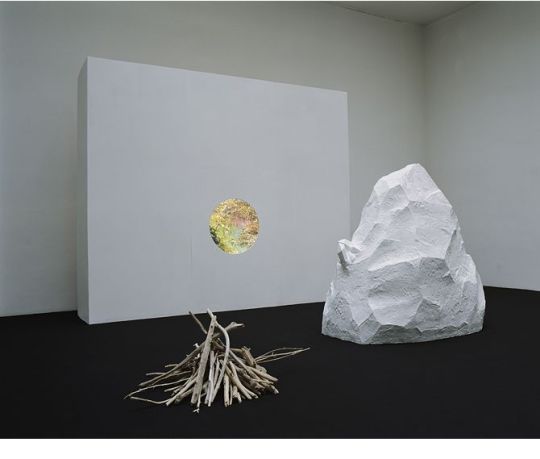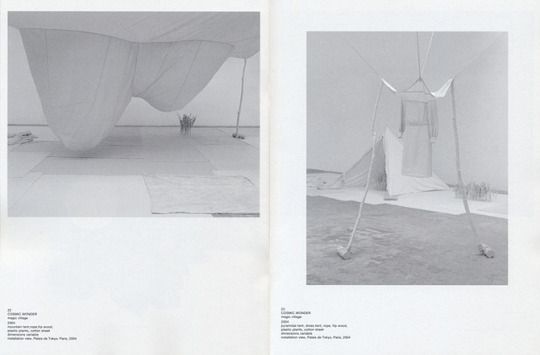Interview: Yukinori Maeda of Cosmic Wonder

Cosmic Wonder, initiated in 1997 by artist Yukinori Maeda, is a conceptual project composed of clothing, artwork, publishing and performance.
Cosmic Wonder has deepened its exploration of natural materials, working with a sustainable vision that looks both ahead and to the past. The process of infusing handicrafts with traditional Japanese techniques is a way of finding beauty in the continuity between the future and a past that we are at risk of losing.
Cosmic Wonder is one of my all time favorite brands/art projects; I have always admired their methods, their ethos, and have developed a profound respect of their manufacturing process.
I recently had the great pleasure to speak with Yukinori Maeda and discuss the process, project, and the journey of Cosmic Wonder.
What are some of your favorite memories from the journey?
とても大切な旅の記憶はいくつかありますか?
Yukinori Maeda: We had the one important journey – we came to the Earth from the universe.
とても大切な旅はひとつ、宇宙から地球にきたことです。

Who are you designing for?
あなたは誰のために、デザインをしていますか?
YM: I’m designing for those who love Cosmic Wonder.
Cosmic Wonderを愛する人のためにデザインをしています。
Over the decades has this changed?
それは時を経て、変わっていきましたか?
YM: It has changed with the evolution of the Earth.
地球の進化とともに変化してきました。
How do you make choices regarding materials used in collections?
あなたがコレクションで使用する素材についてどのようにえらびますか?
YM: I choose materials that are produced through the beautiful process.
Particularly, hand-spun natural cotton, organic cotton, organic linen, hemp, ramie (choma), mountain wool, silk, vegetable tanned leather, and white tanned leather rubbed with salt, etc. I also like to use vegetable dyes and sumi-dyed gray for these materials.
素材の制作される行程が美しいもの。
主に、手紡ぎ自然栽培コットン、オーガニックコットン、オーガニックリネン、
大麻布、苧麻、山岳羊毛、シルク、ベジタブルタンニンレザー、
塩で鞣した白なめしたレザーなど。それらを草木染め墨染めなどすることも好んでいます。
Existing materials vs making new materials?
今まで使ってきている素材 と あたらしく出会った素材では? 何か違いがありますか?
YM: I like natural fabric very much now. Natural fabric is a textile that is made out of grass fibers or wood fibers by weaving. Fabrics from grass include hemp (taima), ramie (choma or karamushi), arrowroot (kudzu), and Japanese fiber banana (bashou).
Fabrics from wood include Japanese linden (shina), Manchurian Elm (ohyou), wisteria (fuji), and mulberry (kaji or kouzo).
Although each production is different, the process begins with mowing plants, then stripping off the bark, getting rid of lye, fermenting, carefully removing fibers, twining (itoumi), and finally weaving on a loom.
In the past, people used to make such fabric on the side of working in the fields. In our performance of the 20th anniversary Ryugu koromo from Genshi-fu; we produced clothes made of such fabric.
いまは自然布がとても好きです。
自然布は草や木から繊維を取り出し糸にして織りあげた布です。
草は大麻、からむし、葛、芭蕉。木は科(しな)、オヒョウ、藤、梶(カジ)、楮など。
それぞれ制作の行程はそれぞれ違いますが、草木を刈り取り、樹皮をはぎ取り、灰汁(アク)炊
きや発酵などをさせ、丁寧に繊維を取り出し、糸績み(イトウミ)をして、機にかけて織り上げ
ます。
昔は畑仕事をしながら、そのような布を作っていました。
20周年記念のパフォーマンス「竜宮衣 原始ノ布」はそのような布による衣裳を制作しました。
What is the silhouette and cut of clothing that Cosmic Wonder is aiming for?
Cosmic Wonderが目指している衣のシルエットやカッティングはどのようなものでしょうか。
YM: We keep a space in mind. We aim for clothes that resound beautifully in our space.
空間のことを意識しています。
わたしたちの空間に美しく響く衣を目指しています。
What is interplay between Yukinori Maeda’s art practice and the Cosmic Wonder collection? Yukinori Maeda'sの芸術活動の実践とCosmic Wonderのコレクションとの相互作用は何でしょうか。
YM: It allows us to contemplate the universe and experiment the impact on a space.
宇宙について思考すること、空間についての作用を試みること。
Could you walk us through the role of light, water, fire and the basic elements in Cosmic Wonder?
Cosmic Wonderにおける光と水、火の基本的なエレメンツの役割を教えていただけますか。
YM: In particular, it is to pour light on those made of wood, earth, water, fire, wind, gold, and so on.
詳しく言えば、木、土、水、火、風、金などで出来上がったそれらに光を注ぐこと。
What is the role of collaboration in Cosmic Wonder’s process?
Cosmic Wonderのプロセスの中でコラボレーションの役割は何でしょうか。
YM: It is to provide the pleasure of discovering the beauty of the universe from multiple perspectives.
宇宙の美しさを多角的に発見する喜び。
Some of my favorite projects are the photobooks with Takashi Homma and I’m curious how you develop these collaborations.
私がフェイバリットなプロジェクトの幾つかはTahashi Hommaと行うプロジェクトです。
そして、それをどのようにしてこれが生まれるのかが知りたいです。
YM: Each time a project is born as if something is unloaded. A liberal, experimental atmosphere flows at times. The project with Takashi Homma is particularly special to us.
そのプロジェククトはいつも、なにかを降ろすように始まり生まれます。
自由な実験的な風も時にながれます。
ホンマタカシと行うプロジェクトはわたしたちにとって特別なことなのです。
What is the interplay between the Cosmic Wonder clothing and the larger installations, art pieces, and events?
衣とインスタレーションとイヴェントの相互作用は何でしょうか。
YM: The interplay of each element and concept of clothing, installation art, and performances creates the enhanced whole, which allows us to perceive the beautiful universe.
衣、インスタレーション、パフォーマンス、それらにあるそれぞれの要素とコンセプトを重ね
ることで、幾十にもなった全体から美しい宇宙を感じさせること。
What is the interplay between the past and the future for Cosmic Wonder?
Cosmic Wonderにとって過去と未来の相互作用は何でしょうか。
YM: It allows us to recognize that everything flows simultaneously.
全てが同時進行であることに気付くこと。
What do the next 20 years hold for Cosmic Wonder?
Cosmic Wonderとって、これからの20年何を抱いていきますか?
YM: We will perfect geometric designs to bring us into harmony with the universe.
これからわたしたちは宇宙に帰る為に幾何学模様を完成させるでしょう。
All images via Cosmic Wonder